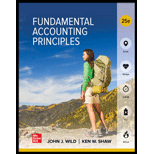
1.
A cost-of-quality (COQ) depicts quality-related costs that a firm incurs during a reporting period. These costs are bifurcated into four categories including prevention costs, appraisal costs, internal failure costs, and external failure costs.
:
The total cost of quality for last year and this year.
2.
A cost-of-quality (COQ) report depicts quality-related costs that a firm incurs during a reporting period, that can help management as well as users to determine total spending on quality, identify the areas that need attention, and improvement, and overtime recognizes the effects of their actions on both total quality costs and the components of overall quality costs.
:
Cost of each category as a percent of the total cost of quality of last year.
3.
A cost-of-quality (COQ) report depicts quality-related costs that a firm incurs during a reporting period, that can help management as well as users to determine total spending on quality, identify the areas that need attention, and improvement, and overtime recognizes the effects of their actions on both total quality costs and the components of overall quality costs.
:
Cost of each category as a percent of the total cost of quality of last year.
4.
A COQ report can help management as well as users to determine total spending on quality, identify the areas that need attention, and improvement, and over time recognizes the effects of their actions on both total quality costs and the components of overall quality costs.
:
Want to see the full answer?
Check out a sample textbook solution
Chapter 5 Solutions
FUND.ACCT.PRIN.
- Ginx Enterprises had $250,000 in sales on account last year. The beginning accounts receivable balance was $15,000, and the ending accounts receivable balance was $22,000. The company's average collection period (age of receivables) was closest to: (a) 19.54 days. (b) 36.68 days. (c) 27.02 days. (d) 52.45 days.arrow_forwardHello tutor given correct answer general Accountingarrow_forwardExperience step by steparrow_forward
 Intermediate Accounting: Reporting And AnalysisAccountingISBN:9781337788281Author:James M. Wahlen, Jefferson P. Jones, Donald PagachPublisher:Cengage Learning
Intermediate Accounting: Reporting And AnalysisAccountingISBN:9781337788281Author:James M. Wahlen, Jefferson P. Jones, Donald PagachPublisher:Cengage Learning Financial Accounting: The Impact on Decision Make...AccountingISBN:9781305654174Author:Gary A. Porter, Curtis L. NortonPublisher:Cengage Learning
Financial Accounting: The Impact on Decision Make...AccountingISBN:9781305654174Author:Gary A. Porter, Curtis L. NortonPublisher:Cengage Learning College Accounting (Book Only): A Career ApproachAccountingISBN:9781337280570Author:Scott, Cathy J.Publisher:South-Western College PubPrinciples of Accounting Volume 1AccountingISBN:9781947172685Author:OpenStaxPublisher:OpenStax College
College Accounting (Book Only): A Career ApproachAccountingISBN:9781337280570Author:Scott, Cathy J.Publisher:South-Western College PubPrinciples of Accounting Volume 1AccountingISBN:9781947172685Author:OpenStaxPublisher:OpenStax College Cornerstones of Financial AccountingAccountingISBN:9781337690881Author:Jay Rich, Jeff JonesPublisher:Cengage Learning
Cornerstones of Financial AccountingAccountingISBN:9781337690881Author:Jay Rich, Jeff JonesPublisher:Cengage Learning





